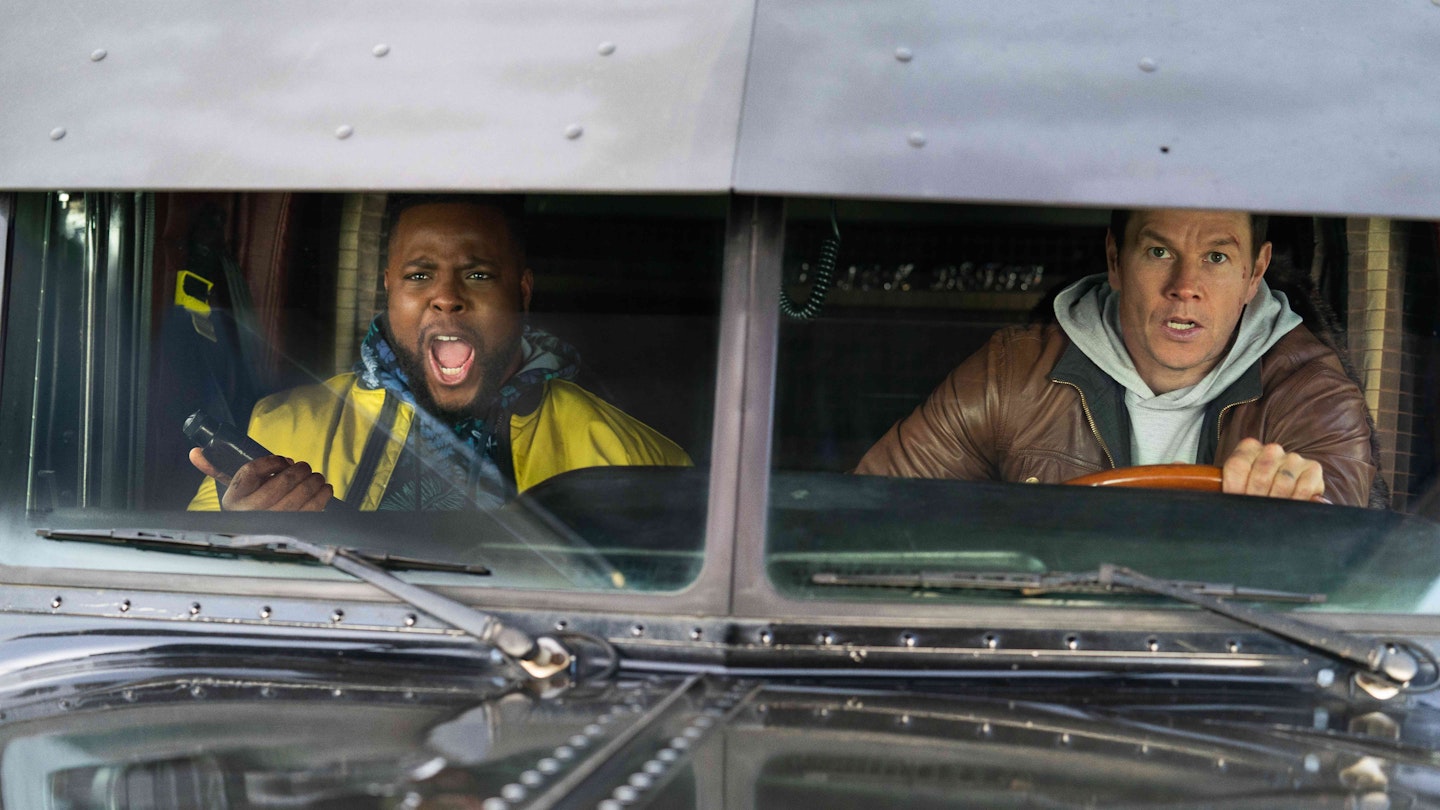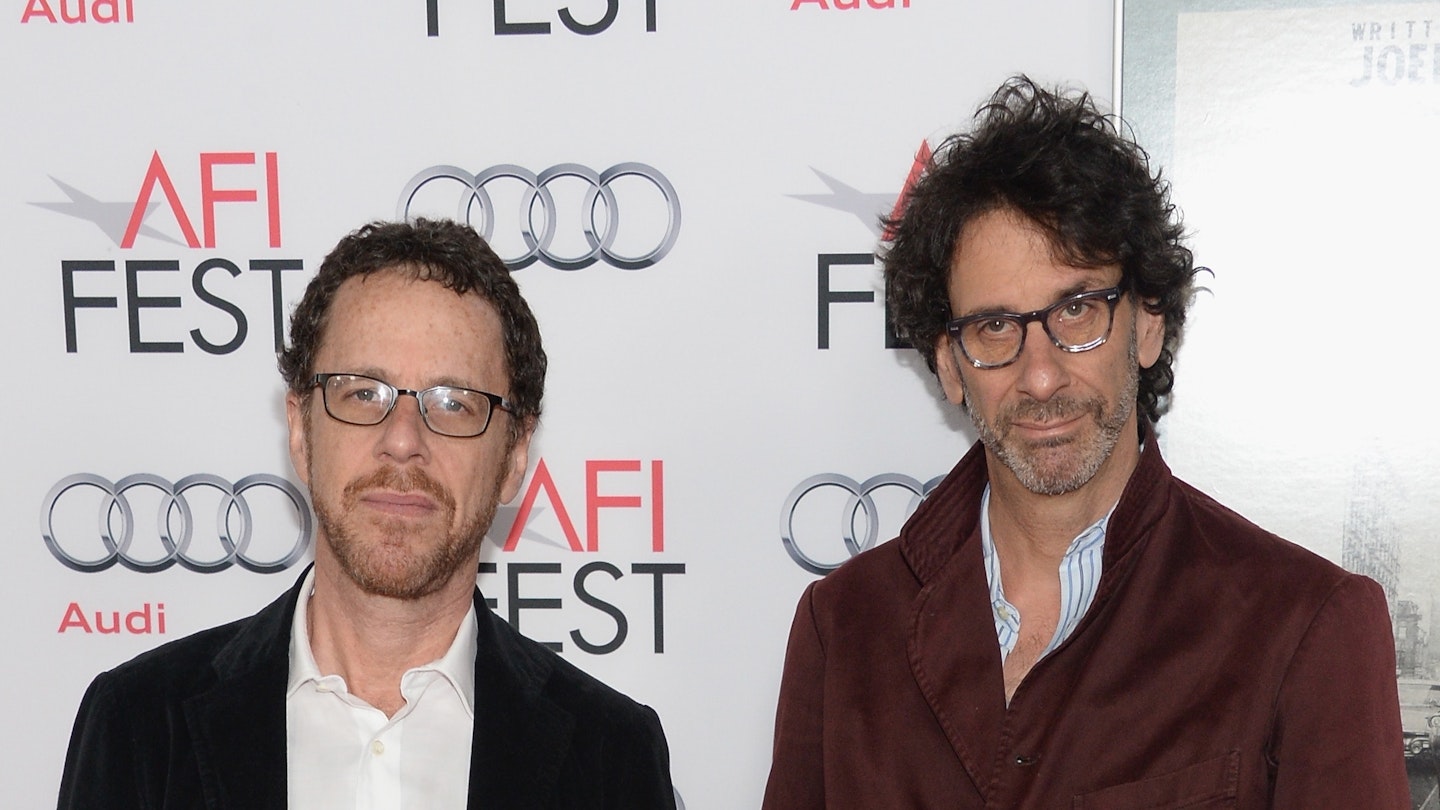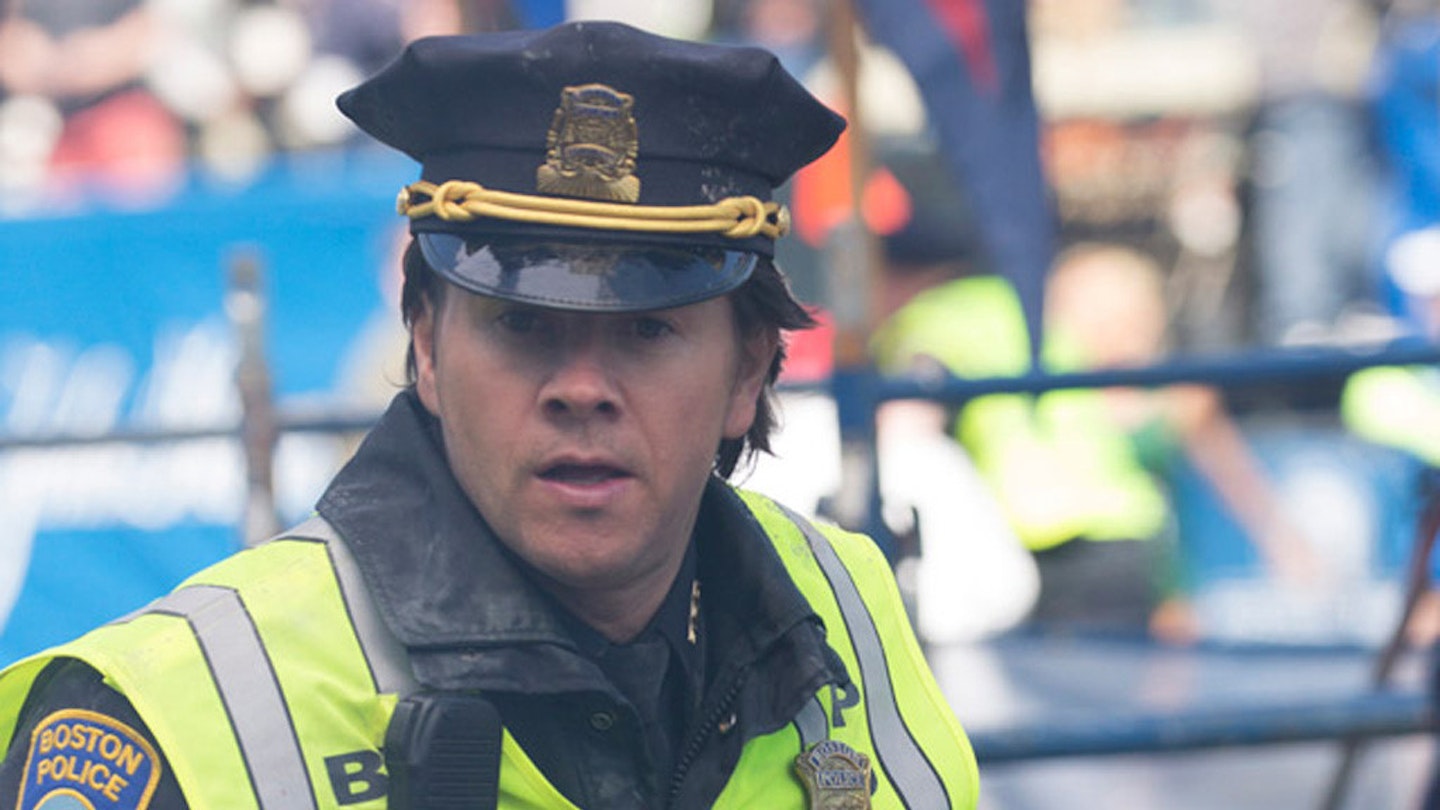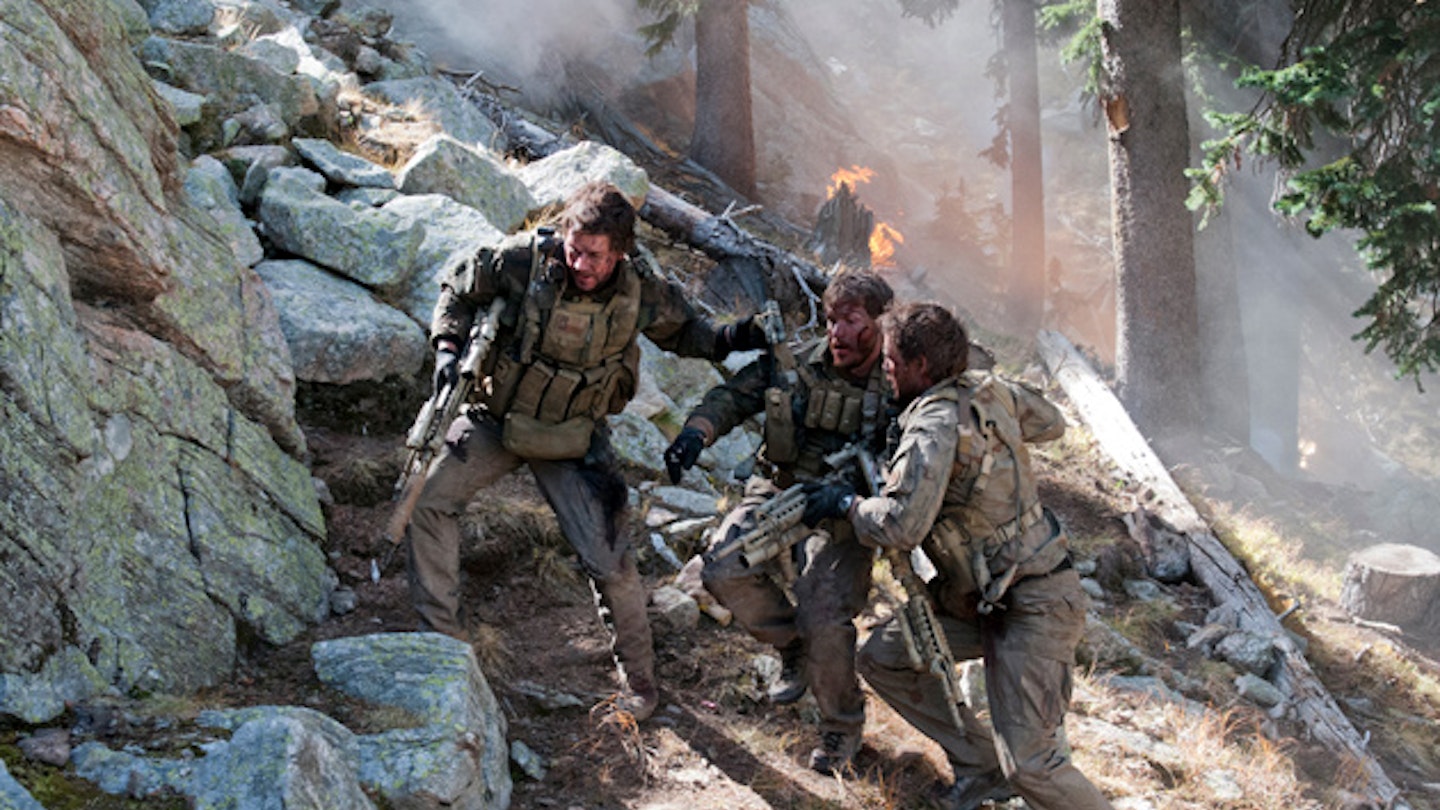For a film with an hour-long firefight in which a quartet of Navy SEALs are shot, burned, blown up and impaled, it’s curious that the most brutal opponent in Peter Berg’s Lone Survivor turns out to be a tree. In a scene that surpasses 2007’s Hot Rod as the definitive example of Man Vs. Hill, the four soldiers, fleeing incoming fire, hurl themselves over a rocky escarpment. The resulting 30-second descent makes you feel every crack, thud and crunch, as they collide with stumps and rocky outcrops before coming to a sudden arboreal stop. It’s an eye-watering sequence, one that leaves you as emotionally battered and broken as the men themselves (not to mention the stuntman who suffered three broken ribs and a punctured lung). And if that weren’t enough, 20 minutes later it happens all over again.
An ocean away from Battleship’s frothy action, Berg’s latest war film shows a very different face to armed conflict, demonstrating how even the best-laid plans fall apart in the face of sod’s immutable law. Based on Marcus Luttrell’s bestselling account of Operation Red Wings, Lone Survivor jettisons much of the book’s context, focusing on the mission itself. The single, rolling engagement that occupies almost half the film’s run time is a punishing ordeal deftly handled by Berg, who shows off the knack for limited-vantage, running firefights he demonstrated in The Kingdom.
But as effective as the action is, it comes at the expense of personality. We know almost nothing about the men whose lives hang in the balance, save for a fumbled series of playbook touchstones (an IM chat to a sweetheart back home and some eye-rolling at a wife’s interior design choices). Berg veteran Taylor Kitsch gives a decent stab at bringing humanity to squad leader Lt. Murphy, while Wahlberg does his level best to breathe some life into Luttrell himself; Emile Hirsch, on the other hand, is left with almost nothing to do. The opposition fares still worse, with Taliban commander Ahmad Shah (Yousuf Azami) beheading an Afghan villager purely to show how horribly evil he is. A sop at the film’s conclusion, insisting that not all Afghans are bloodthirsty insurgents, only serves to highlight the film’s binary morality.
It’s particularly unfortunate given that the story hinges on a morally complex decision. Discovered by a trio of non-combatants, the soldiers wrestle with the practical implications of cutting them loose and the ethical consequences of cutting their throats. Given how the film pans out, you can’t help wondering whether the point of this tale is that they’d have been far better off having murdered the lot of them, which is discomfiting to say the least. That the team did not is commendable, but their hagiographic treatment is as unwarranted as it is poor storytelling. The notion that these men are red-blooded American heroes is banged home with alarming regularity, and capped off by an arduous montage of the real-life soldiers, set to a cover of Bowie’s Heroes. If you’re looking for political subtlety, even Battleship might be a better option than this.
A lack of story finesse can’t eclipse the veracity of the action, however. For half of Lone Survivor the battle is the narrative, and there it scores a hit with every shot. Quite possibly the most authentic gunfight you’ll see and the most affecting view of combat since Black Hawk Down, this is a potent glimpse at the reality of modern warfare for the Call Of Duty generation.








